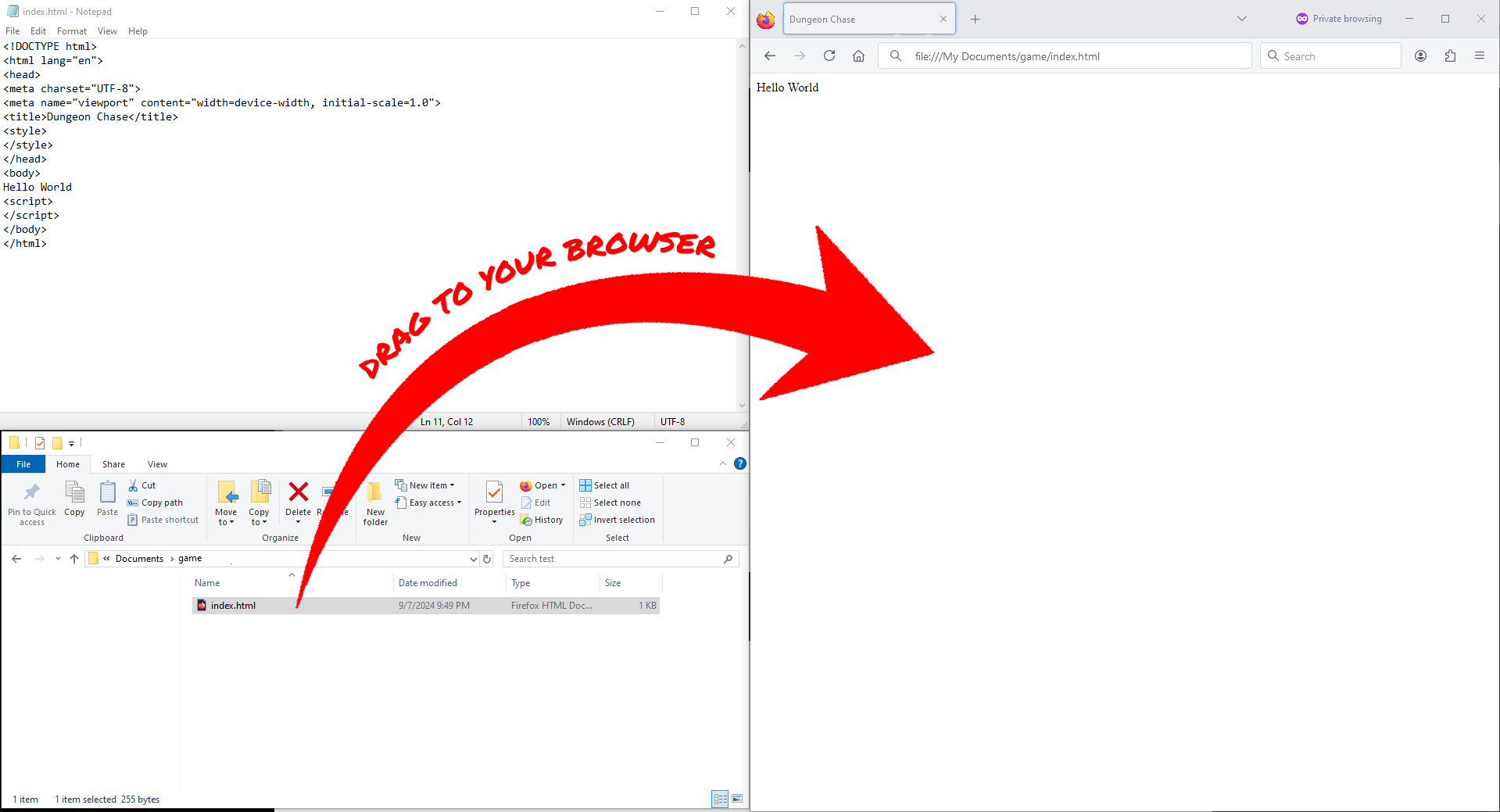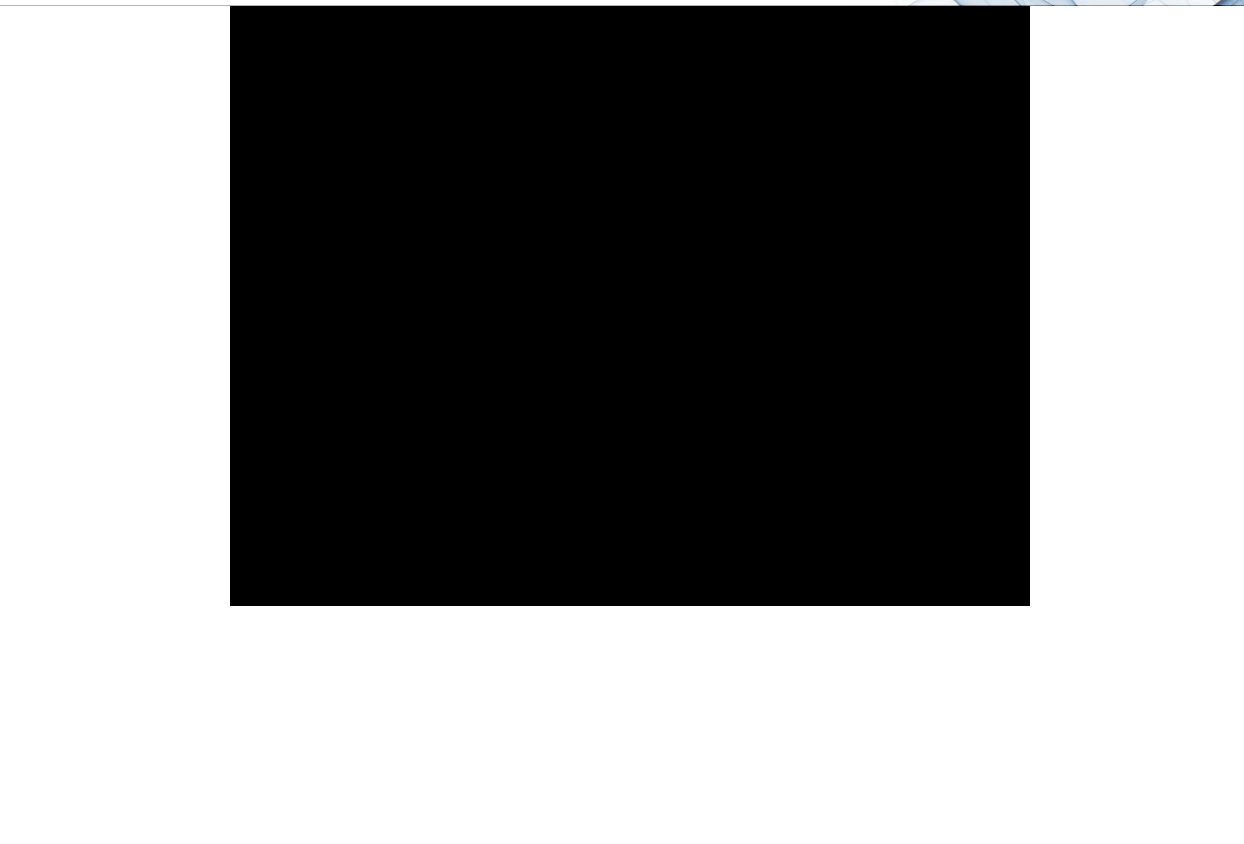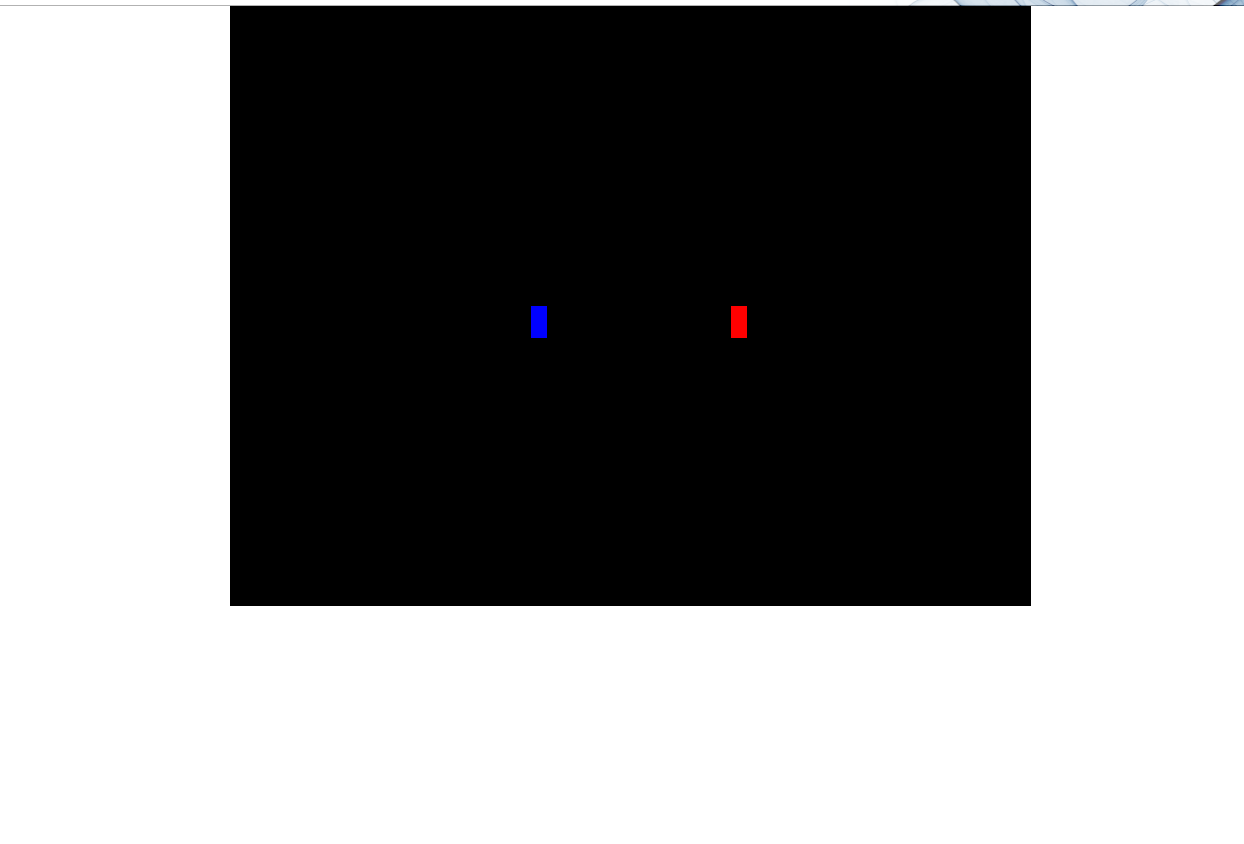Step 1:
Open up notepad and paste in Code 1 below. Save and name the file index.html

It is recommended you create a folder structure as shown above. Put your index.html file into a folder named "game" in your Documents folder.
Code 1: The Header and Body
This is the bare bones of a blank HTML page
<!DOCTYPE html>
<html lang="en">
<head>
<meta charset="UTF-8">
<meta name="viewport" content="width=device-width, initial-scale=1.0">
<title>Dungeon Chase</title>
<style>
</style>
</head>
<body>
Hello World
<script>
</script>
</body>
</html>
Step 2:

Open up a browser and drag the index.html file into the browser and you will see a blank white page with the words "Hello World".
Code 2: Putting the Canvas Element into the HTML Body
Next, we are going to insert a canvas element between the 'body' tags of the HTML document. You can remove the words "Hellow World" in your HTML document.
<!DOCTYPE html>
<html lang="en">
<head>
<meta charset="UTF-8">
<meta name="viewport" content="width=device-width, initial-scale=1.0">
<title>Dungeon Chase</title>
<style>
</style>
</head>
<body>
<div id="canvasContainer">
<canvas id="gameCanvas" class="canvas" width="800" height="600"></canvas>
</div>
<script>
</script>
</body>
</html>
Step 3:

In your notepad and paste in Code 3 below and save. Refresh your browser and you will see a black canvas in your browser as shown in the above image.
Code 3: CSS
Here we insert the CSS in between the 'style' tags. CSS allows us to define how each element will look like.
<!DOCTYPE html>
<html lang="en">
<head>
<meta charset="UTF-8">
<meta name="viewport" content="width=device-width, initial-scale=1.0">
<title>Dungeon Chase</title>
<style>
body {
margin: 0;
overflow: hidden;
position: relative;
}
#gameCanvas {
position: absolute;
top: 0;
left: 0;
z-index: 0;
}
canvas {
display: block;
margin: 0 auto;
}
.canvas {
background-color:black;
}
#canvasContainer {
position: relative;
width: 800px; /* Adjust width as needed */
height: 600px; /* Adjust height as needed */
margin: auto; /* Center the container */
}
</style>
</head>
<body>
<div id="canvasContainer">
<canvas id="gameCanvas" class="canvas" width="800" height="600"></canvas>
</div>
<script>
</script>
</body>
</html>
Step 4:

Insert the javascript in Code 4 between the 'script' tags Code 4 below and save.
Refresh your browser and you will see a red rectangle and a blue rectangle on your canvas.
Code 4: Javascript
<!DOCTYPE html>
<html lang="en">
<head>
<meta charset="UTF-8">
<meta name="viewport" content="width=device-width, initial-scale=1.0">
<title>Dungeon Chase</title>
<style>
body {
margin: 0;
overflow: hidden;
position: relative;
}
#gameCanvas {
position: absolute;
top: 0;
left: 0;
z-index: 0;
}
canvas {
display: block;
margin: 0 auto;
}
.canvas {
background-color:black;
}
#canvasContainer {
position: relative;
width: 800px; /* Adjust width as needed */
height: 600px; /* Adjust height as needed */
margin: auto; /* Center the container */
}
</style>
</head>
<body>
<div id="canvasContainer">
<canvas id="gameCanvas" class="canvas" width="800" height="600"></canvas>
</div>
<script>
const canvas = document.getElementById("gameCanvas");
const ctx = canvas.getContext("2d");
const player = {
x: 300,
y: 300,
width: 16,
height: 32
};
const enemy = {
x: canvas.width - 300,
y: canvas.height - 300,
width: 16,
height: 32
};
function drawPlayer() {
ctx.fillStyle = "blue"; // Adjust the alpha value (last parameter) for transparency // "rgba(0, 0, 0, 0)"
ctx.fillRect(player.x, player.y, player.width, player.height);
}
function drawEnemy() {
ctx.fillStyle = "red"; // "rgba(0, 0, 0, 0)"
ctx.fillRect(enemy.x, enemy.y, enemy.width, enemy.height);
}
drawPlayer();
drawEnemy();
</script>
</body>
</html>
